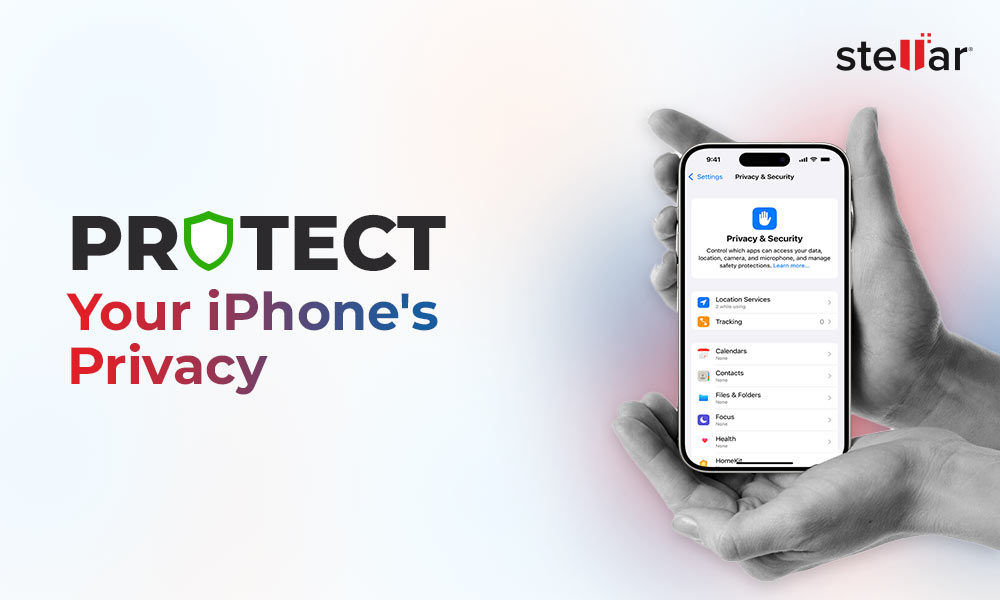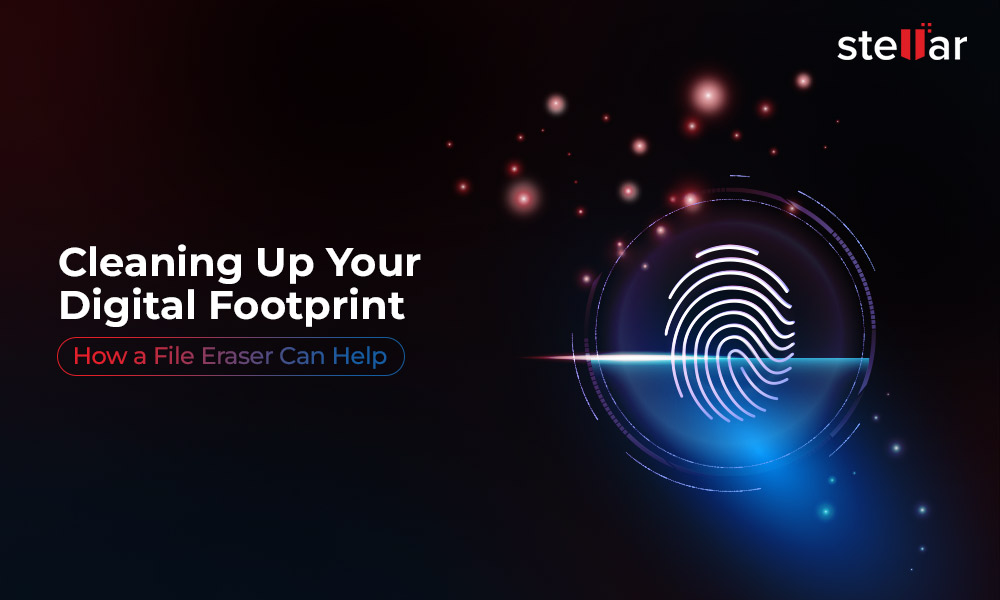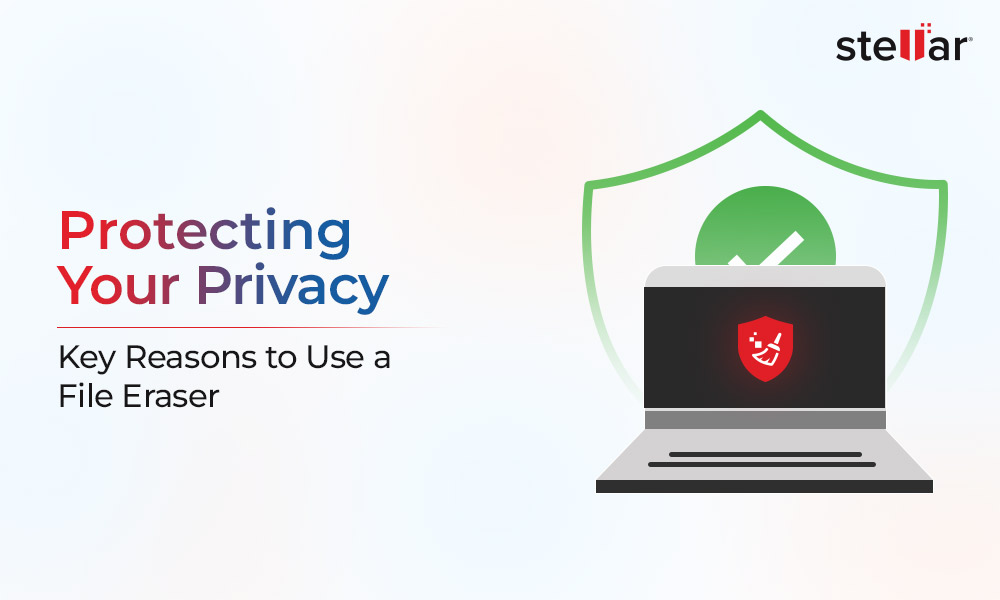When you delete the scanned copy of your passport or driver’s license, saved on your PC, you may think the document no longer exists. But you couldn’t be further from the truth.
Deleting a file only removes the path your OS uses to access it but the file itself lurks somewhere on your hard disk, and someone with the right tools can recover it. This article will discuss the risks of insecure file deletion and how a file eraser software can help you mitigate them.
First Things First: Understanding File-Write Basics
A hard disk is divided into tracks which are further divided into sectors. Most modern drives use sectors between 512 bytes and 4096 bytes.
When you save a file on your computer, the operating system looks for blank space on the storage drive to save the file. This blank space consists of one or more physical sectors on the drive. The OS further maintains a directory of files and their associated locations on the drive.
If a file doesn’t fill all the space in a sector, the remaining space in that sector will be left empty. Conversely, when a file expands, it can occupy additional sectors on the disk. Since sectors are not continuous, the files may be written in different locations across the disk.
Why Conventional File Deletion or Formatting Isn’t Enough
Once you delete a file stored on your storage drive, it is relocated to the Bin or Trash folder. When you empty the Trash folder, the OS removes the file from disk’s folder directory and makes the previously occupied space on the sector as available for storing new data. Similarly, reformatting the drive will only delete all the folder directories on the hard disk.
However, it’s important to understand that the original data remains on the sectors where it was previously stored until it is overwritten by new data.
Think of your storage system as a library. Deleting a file is like removing a card (file) from the card catalog (directory structure) that tells you the location of a book (file). The book (file) itself is placed on the shelf (sectors on the storage drive), but without the card, it’s not easy to find it.
But keep in mind that someone using a specialized data recovery tool or data forensic techniques can still reconstruct and access the deleted files.
Risks of Insecure File Deletion
Inadequate file deletion poses a significant risk, making your data vulnerable to unauthorized access. If your confidential files containing sensitive personal information or proprietary business data fall into the wrong hands, it can lead to various types of harms. Here are some of the risks involved with insecure deletion:
Data Recovery: Deleted files and residual data can still be accessed and reconstructed using specialized data recovery tools. If these files contain sensitive information, it could lead to data leakage.
Privacy Invasion: Unauthorized exposure of sensitive personal data, including intimate photos, videos, private emails, and messages, can violate your privacy.
Identity Theft: Malicious actors can gain access to your personal data, such as social security numbers, addresses, phone numbers, etc., and commit identity theft.
Extortion and Blackmail: Leaked data can be used by malicious entities for blackmail or extortion, demanding money or other favors.
Financial Fraud: Bank account details, including debit or credit card information, and other confidential financial data can be misused by unauthorized persons to make illegal transactions and other types of frauds.
Reputational Damage: Private information, such as investment details, personal projects, or work-related documents, can be leaked to damage an individual’s personal and professional reputation.
How to Securely Wipe Data to Ensure Permanent Erasure?
Securely wiping data involves taking additional steps to ensure the files are permanently erased beyond recovery. Let’s take a look at some of these methods:
Using Built-in Utilities on Windows and macOS
Both Windows & Mac offer built-in tools for secure deletion. Windows users can use the Cipher command to overwrite files with random data and ensure their secure deletion. Similarly, macOS users can employ the SRM command to securely delete files.
These command-line tools might not be suitable for non-technical users. And, they are often unable to recognize, access, or overwrite data contained in bad and hidden sectors.
Use a File Eraser Software to Permanently Wipe Files
While the built-in erasure commands employ a single pass to overwrite data, offering only a basic level of security. A specialized file eraser software uses multiple passes with different algorithms to completely shred your data, beyond recovery.
Stellar File Eraser is one such tool that uses advanced shredding algorithms to permanently delete files, ensuring your sensitive data is securely wiped from your laptop or desktop PC. It is compatible with both Windows and macOS. The tool wipes all traces of your online activity, including cookies, temporary files, favorites and autocomplete data for forms.
Additionally, it removes deleted data, and any application and system traces left on your PC to guarantee complete peace of mind. You can add all unwanted files and folders to a list to wipe them in one go or schedule the wipe tasks to run them automatically at a predefined date and time.

Wrapping Up
Accessing the potential risks of insecure deletion is the first step towards maintaining comprehensive data security. As previously stated, insecure deletion makes your data vulnerable to unauthorized access and other types of harm, including identity theft, financial fraud, and more.
When disposing of your sensitive files, we recommend using a file eraser software to securely wipe information from your HDDs, SSDs, USB flash drives, or other storage drives to eliminate chances of data recovery.












 4 min read
4 min read





